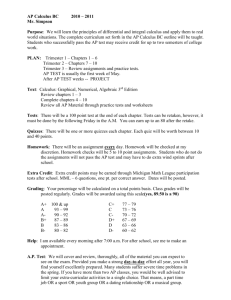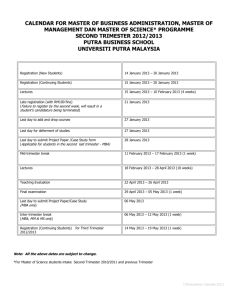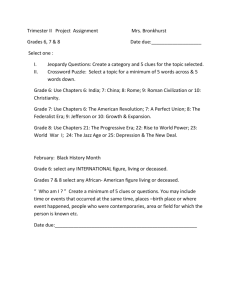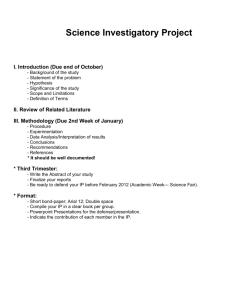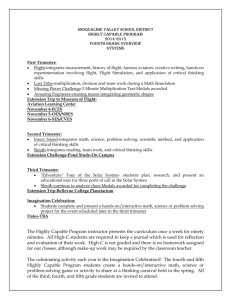AP Chemistry Final Exam Review The exam will have two sections
advertisement
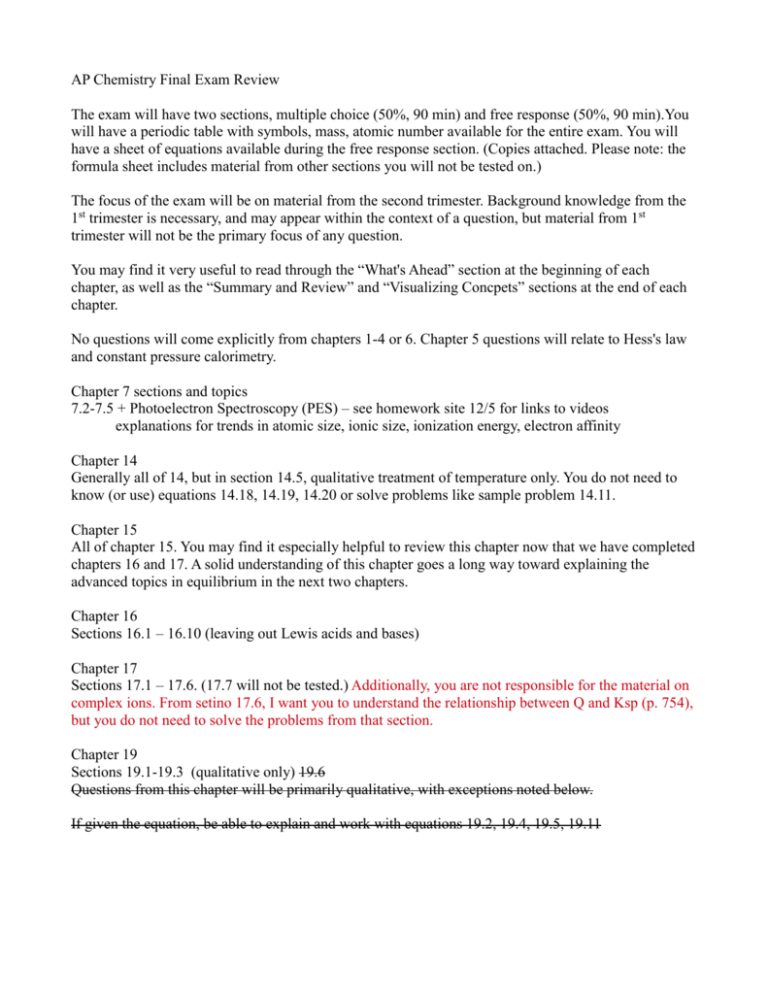
AP Chemistry Final Exam Review The exam will have two sections, multiple choice (50%, 90 min) and free response (50%, 90 min).You will have a periodic table with symbols, mass, atomic number available for the entire exam. You will have a sheet of equations available during the free response section. (Copies attached. Please note: the formula sheet includes material from other sections you will not be tested on.) The focus of the exam will be on material from the second trimester. Background knowledge from the 1st trimester is necessary, and may appear within the context of a question, but material from 1st trimester will not be the primary focus of any question. You may find it very useful to read through the “What's Ahead” section at the beginning of each chapter, as well as the “Summary and Review” and “Visualizing Concpets” sections at the end of each chapter. No questions will come explicitly from chapters 1-4 or 6. Chapter 5 questions will relate to Hess's law and constant pressure calorimetry. Chapter 7 sections and topics 7.2-7.5 + Photoelectron Spectroscopy (PES) – see homework site 12/5 for links to videos explanations for trends in atomic size, ionic size, ionization energy, electron affinity Chapter 14 Generally all of 14, but in section 14.5, qualitative treatment of temperature only. You do not need to know (or use) equations 14.18, 14.19, 14.20 or solve problems like sample problem 14.11. Chapter 15 All of chapter 15. You may find it especially helpful to review this chapter now that we have completed chapters 16 and 17. A solid understanding of this chapter goes a long way toward explaining the advanced topics in equilibrium in the next two chapters. Chapter 16 Sections 16.1 – 16.10 (leaving out Lewis acids and bases) Chapter 17 Sections 17.1 – 17.6. (17.7 will not be tested.) Additionally, you are not responsible for the material on complex ions. From setino 17.6, I want you to understand the relationship between Q and Ksp (p. 754), but you do not need to solve the problems from that section. Chapter 19 Sections 19.1-19.3 (qualitative only) 19.6 Questions from this chapter will be primarily qualitative, with exceptions noted below. If given the equation, be able to explain and work with equations 19.2, 19.4, 19.5, 19.11 EXPERIMENTS/INVESTIGATIONS You should study the following three labs to be familiar with the major chemical procedures and experimental topics that we have covered this trimester. Be sure to review the main ideas, the basic experimental design and data collected (not the numbers, but the type of data you would need to collect), and be able to predit the effect of possible errors on the results. With the assistance of the equation sheet, you should also be able to perform calculations related to a lab.(For example, you could be asked to calculate the heat per mole of solute released in a “hot pack” experiment using q=mCdT and the molar mass of the solute.) Labs: “What is the Rate Law of the Fading of Crystal Violet Using Beer's Law” How/why do you set up a calibration curve for spectrophotometry experiments? What would a graph of the integrated rate law look like if the process is 1st order? 2Nd order? What is meant by a pseudo-first order rate law? “How do the structure and initial concentration of an acid and a base influence the pH of the resultant solution during a titration? What are the important steps in performing a titration, and what could go wrong? Why did we need to use KHP as a primary standard to find the molarity of the NaOH? Compare the shapes of titration curves for strong acid/strong base, weak acid/strong base, diprotic acid/strong base why does the pH change so drastically with the addition of a small amount of base near the equivalence point? What does the steep part tell you about the end point or equivaence point? “Which salts make good hot packs and cold packs?” How does a calorimeter work? What data do you need to collect? What does an endothermic dissolving process vs an exothermic dissolving process indicate about the energy required to break apart the crystal vs solvation of the ions.

